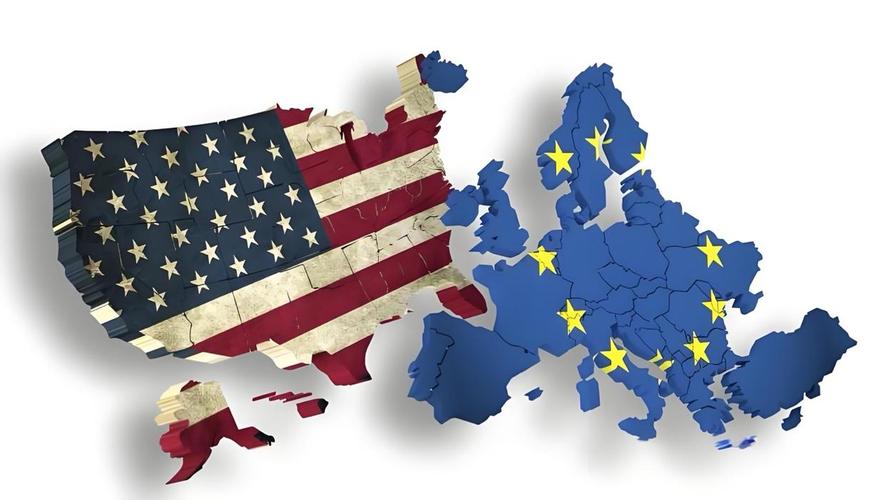
On July 24, 2025, US Treasury Secretary Scott Bessent issued a clear warning on Fox News: If Japan fails to fulfill the newly reached trade agreement as required by the US, the US tariff rate on Japanese goods will be raised from the current 15% back to 25%. This statement not only exposes the fragility of US-Japan trade relations but also reflects the hardline logic of the Trump administration in using tariffs as a weapon to reshape the global trade order.
I. Agreement Reached: A Dramatic Turn from Threats to Compromise
On July 22, 2025, Trump proudly announced on social media that the US and Japan had reached the "largest-ever trade agreement in history." The core contents include reducing the tariff on Japanese goods exported to the US from 25% to 15%, Japan's commitment to investing 550 billion US dollars in the US, and expanding market access for US automobiles, rice, and other products in Japan. A photo of the negotiation scene released by Dan Scavino, the Deputy White House Chief of Staff, showed that the investment amount on Trump's desk was crossed out from the initial 400 billion US dollars and rewritten as 550 billion US dollars. This detail vividly demonstrated the dominant position of the US in the negotiations.
However, behind this seemingly "win-win" agreement lies eight rounds of arduous negotiations. During the negotiations led by Japanese Minister for Economic Revitalization Akira Shinzato in the US, Trump repeatedly threatened to impose a 50% tariff on Japanese automobiles. He even specifically criticized Japan for "accepting millions of US cars while refusing to import US rice," calling it an unfair trade practice. Japan's Kyodo News commented that although Japan managed to secure a tariff reduction, the final rate was still significantly higher than the normal level under the WTO framework, and Japan had to undertake huge investment obligations, making it a "compromise with shackles."
II. Implementation Risks: The Sword of Damocles under the Quarterly Review Mechanism
The "quarterly review mechanism" emphasized by Bessent has become the biggest variable in the implementation of the agreement. According to the US design, the Office of the United States Trade Representative will evaluate Japan's performance in areas such as investment commitments, market openness, and tariff quotas every three months. If Trump determines that Japan is "not making enough efforts," the tariff rate can be restored to 25% within 24 hours. This "dynamic tariff" design essentially extends trade policy into an extension of the president's personal will.
Japan faces enormous pressure to fulfill the agreement. The agreement requires Japan to complete 550 billion US dollars of investment within five years, with 90% of the profits going to the US side. This means that Japanese companies will have to open up technology cooperation with US companies in sensitive areas such as pharmaceuticals and semiconductors, which may trigger industrial security disputes. An even more thorny issue is the market openness clause for agricultural products: Although Japan has obtained adjustment space for rice import quotas, agricultural groups have warned that the influx of low-priced US rice will destroy the livelihood of Japanese rice farmers. If the Kishida administration fails to balance domestic interests, it may repeat the crisis of the 2019 Japan-South Korea trade war that led to a regime crisis.
III. Global Ripples: The Chain Reaction of Trade Protectionism
The conclusion of the US-Japan agreement and its implementation risks are triggering a chain reaction in the global trade system. The European Commission urgently initiated consultations with the US side to avoid repeating Japan's mistakes. Although India has reached a temporary tariff agreement with the US, disputes remain over market access for agricultural products. China, on the other hand, is accelerating the promotion of RCEP+ regional cooperation and building a trade settlement network independent of the US dollar system. Oxford Economics warned that if the US extends the "quarterly review" model to other trading partners, the global industrial chain will face the risk of fragmentation.
What is even more ironic is that the clause on liquefied natural gas cooperation in the US-Japan agreement exposes the inherent contradictions in Trump's energy policy. The agreement requires Japan to expand its imports of US liquefied natural gas, but the Alaska LNG project has been stalled for years due to environmental reviews, and Japan's actual procurable volume is far lower than the committed scale. This disconnect between the "paper agreement" and real-world conditions further undermines the credibility of the agreement.
IV. Deep-seated Game: The Clash between Alliance Systems and Economic Rationality
The US-Japan trade dispute reflects a deeper strategic dilemma. As a military ally, Japan is highly dependent on the US in the security field, but economically, it forms a complex triangular relationship with China, the US, and Europe. The Trump administration has weaponized tariffs, forcing Japan to "take sides" between China and the US, essentially securitizing and instrumentalizing the economy. Although Japanese Prime Minister Fumio Kishida praised the agreement as the "minimum achievable result," a Kyodo News survey showed that 63% of the Japanese public believed that the government had made too many concessions in the negotiations.
From the US perspective, trade agreements have become a tool to divert domestic contradictions. Trump claimed that the agreement would create "hundreds of thousands of jobs," but Matt Blunt, chairman of the American Automotive Policy Council, pointed out that if higher tariffs are imposed on North American-made cars containing US components, it will directly harm the interests of US workers. This "beggar-thy-neighbor" policy is eroding the soft power that the US has accumulated over the long term.
V. Future Directions: Seeking Certainty amid Uncertainty
Currently, US-Japan trade relations are at a delicate balance point: Japan needs to walk a tightrope between industrial security and agreement fulfillment, while the US must avoid excessive pressure that could rupture the alliance. Bessent's tariff threat is essentially a bargaining chip used by the Trump administration for the 2026 mid-term elections. However, historical experience shows that there are no real winners in trade wars. The 2019 US-Japan automobile tariff dispute led to a 37% plunge in Japanese investment in the US, with US consumers bearing 80% of the tariff costs.
The global trade system is standing at a crossroads. Should it continue down the path of protectionism towards the abyss of "deglobalization," or should it return to the multilateral framework to rebuild rules? The answer depends on whether countries can transcend zero-sum thinking and leave survival space for small and medium-sized enterprises and ordinary people while safeguarding their own interests. The dramatic turn in the US-Japan trade agreement reminds us that under the shadow of the tariff stick, there are no real winners, only common losers.

Since 2025, the conflict between the United States and Europe over the governance of the digital economy has continued to escalate.
Since 2025, the conflict between the United States and Euro…
When German Chancellor Mertz officially announced that he w…
On December 3rd local time, the copper price on the London …
The European Commission announced a new economic security s…
The European Commission announced a new economic security s…
For nearly a year, US President Donald Trump has launched a…